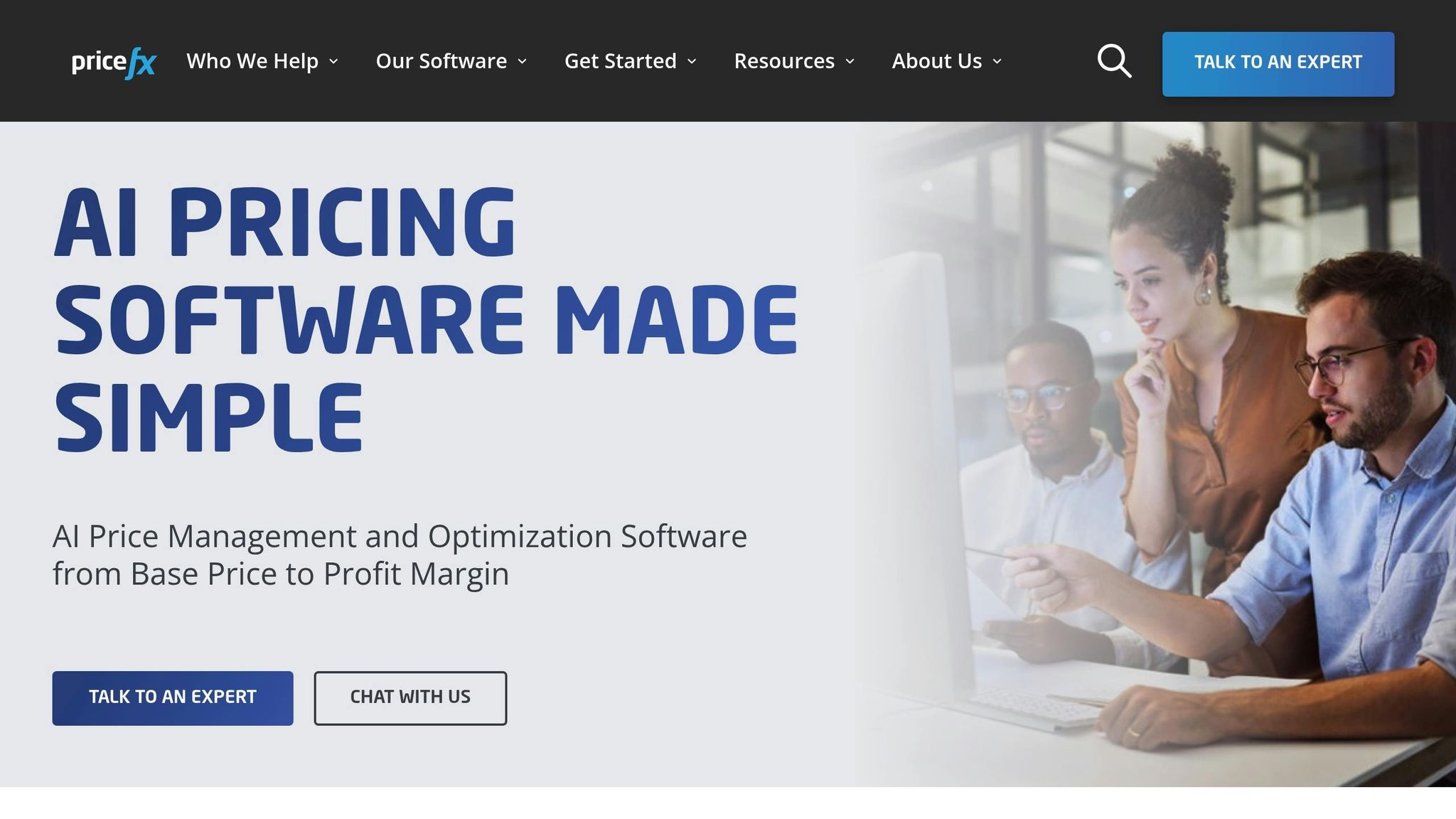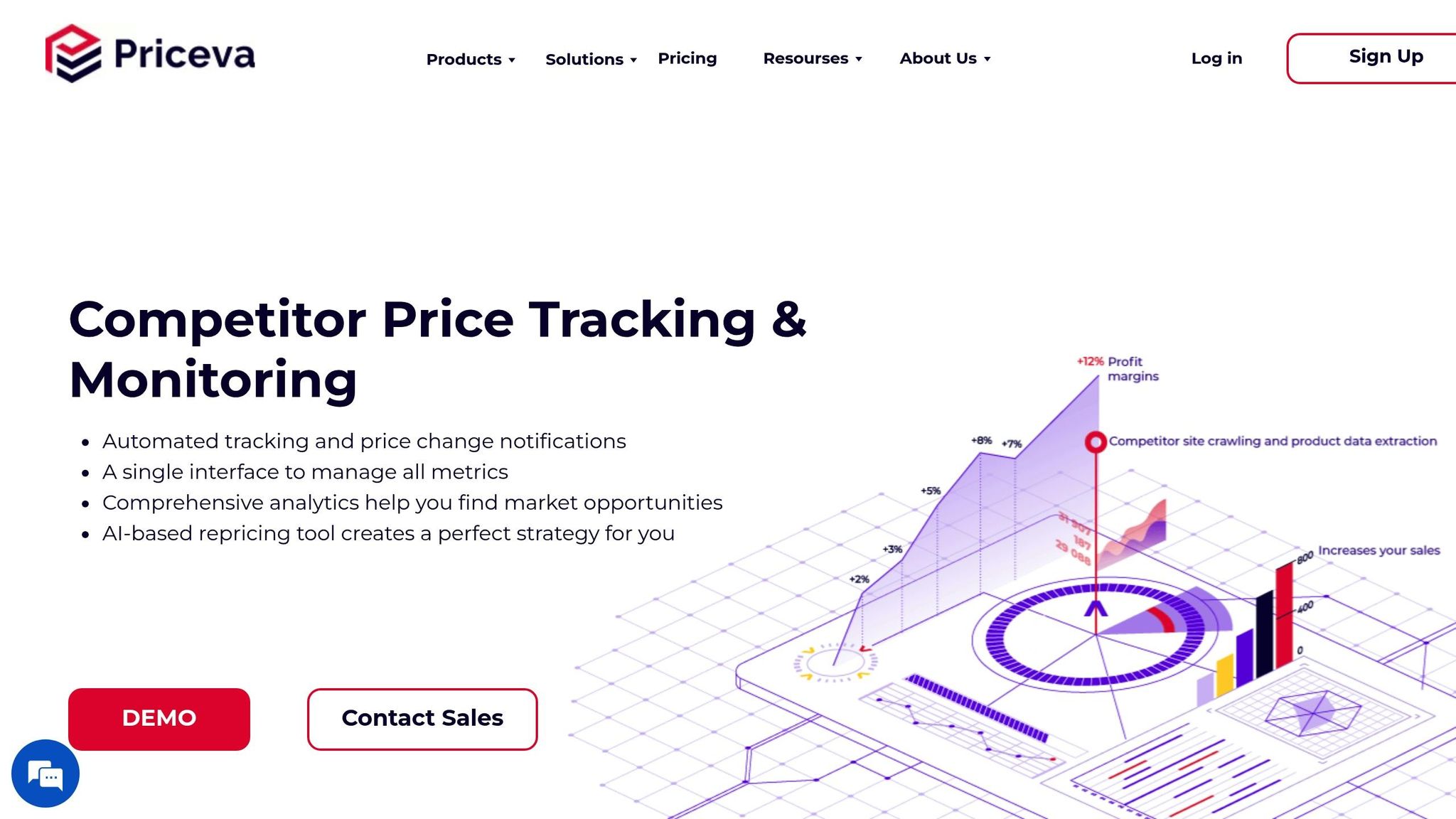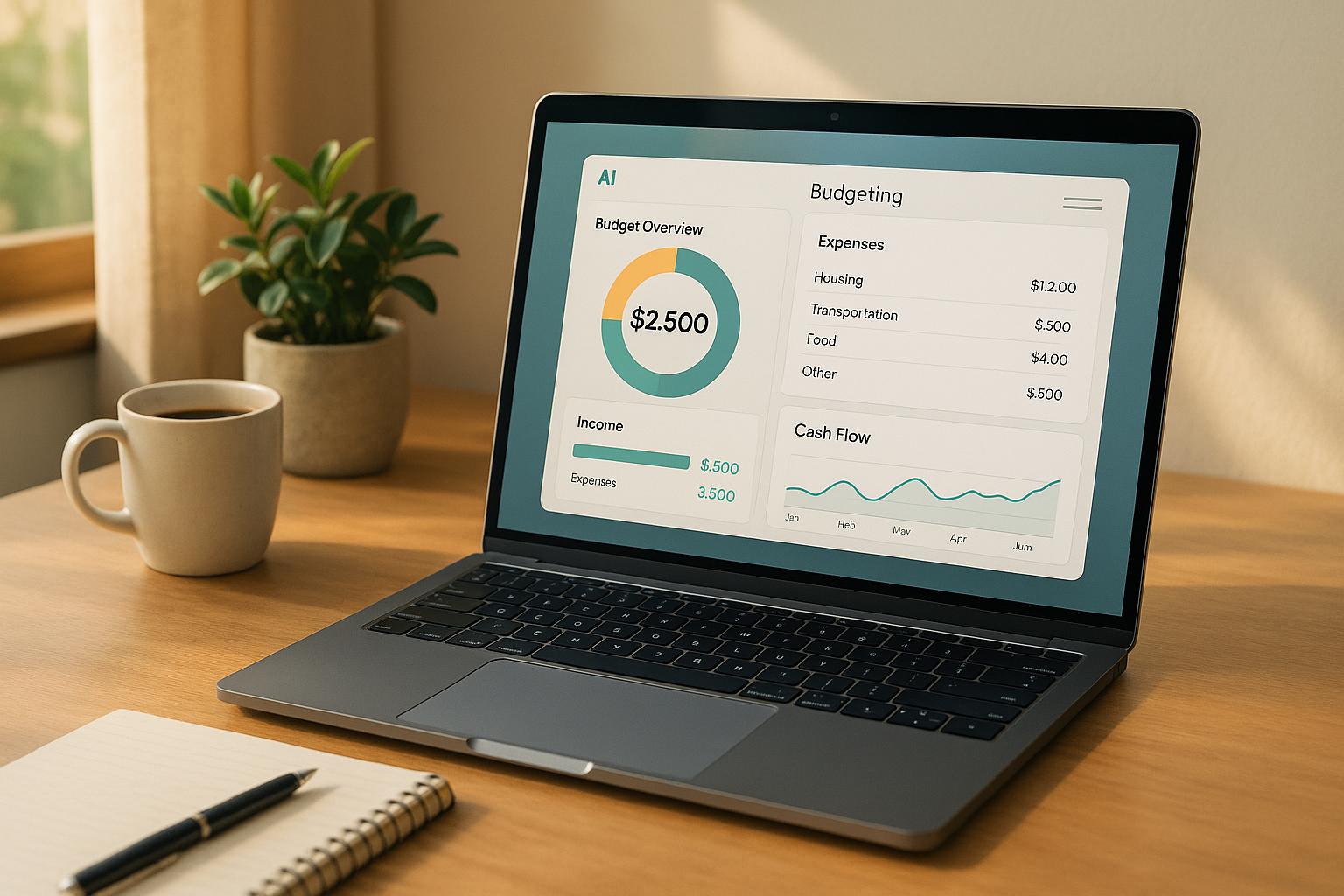AI pricing tools are transforming how businesses set prices, helping them adjust in real-time, maximize profits, and stay competitive. Here’s a quick look at the top tools for 2025:
- AI Apps: Offers real-time market analysis, predictive analytics, and personalized pricing based on customer behavior.
- Price Optimization System: Advanced scenario analysis, demand forecasting, and ERP integration for large-scale pricing strategies.
- Market Price Analyzer: Focuses on competitor monitoring, regional pricing adjustments, and industry-specific insights.
Quick Comparison:
| Tool | Key Features | Best For |
|---|---|---|
| AI Apps | Real-time pricing, customer insights | Small to medium businesses |
| Price Optimization System | ERP integration, profit simulations | Enterprise organizations |
| Market Price Analyzer | Competitor tracking, regional adjustments | Data-driven companies |
AI pricing tools are essential for businesses aiming to align pricing strategies with market trends while maintaining transparency. Choose the tool that fits your size, goals, and industry.
The Best AI Pricing Tool For eCommerce Businesses ...
1. AI Apps

AI Apps' pricing tool uses advanced algorithms to analyze large datasets and provide real-time pricing recommendations. It helps businesses stay competitive while maximizing profits.
Key Features:
- Real-Time Market Analysis: Tracks live market data like competitor prices, demand trends, and inventory levels to adjust prices on the spot.
- Predictive Analytics: Uses historical sales and trends to predict demand and set prices ahead of busy periods.
- Customer Behavior Insights: Personalizes pricing by analyzing buyer location, purchase history, and browsing habits to increase conversions and build loyalty.
Business Advantages:
- Quick responses to changing market conditions
- Cost savings through automation
- Improved profit margins with smarter pricing strategies
By maintaining ethical and transparent pricing, businesses can strengthen customer trust while staying competitive.
Next, Price Optimization System offers subscription-based customization with similar real-time and predictive pricing capabilities.
2. Price Optimization System
The Price Optimization System takes AI Apps' real-time and predictive capabilities a step further, offering advanced data analysis for large-scale pricing strategies.
This platform's AI engine processes billions of pricing scenarios, using historical sales, current market trends, inventory levels, and customer behavior to provide precise recommendations. It gives revenue teams automated insights that help balance profit targets with pricing transparency.
Performance Metrics
- Reduces weekly repricing efforts from 60 hours to just 4 hours
- Achieves over 90% accuracy in short-term forecasts
- Increases gross profit by up to 6%
Real-World Results
- Balsam Brands: Achieved a 3.5% revenue increase through 24,000 targeted discount recommendations.
- WiggleCRC Group: Cut repricing time by 50% while automating over 500,000 SKUs.
- Elkjop: Automated analysis of 1 million data points and matched 60,000 products.
These examples highlight how the system helps businesses in e-commerce, retail, and electronics improve margins.
"Customers expect more personalized experiences. We'll see pricing tailored to specific geographic locations and what local customers are willing to pay",
Dynamic Pricing Features
- Instantly adjust prices based on market changes
- Launch targeted promotions
- Align inventory levels with demand
- Maximize margins across product categories
- Analyze relationships between products
- Detect emerging demand trends
Next, we’ll dive into Market Price Analyzer and its competitive tracking capabilities.
sbb-itb-212c9ea
3. Market Price Analyzer

Market Price Analyzer builds on the foundation of the Price Optimization System by incorporating competitor insights and industry-specific adjustments. It uses live market data to fine-tune pricing strategies for better results.
Key Features
- Tracks pricing trends, competitor activity, local market conditions, supply chain shifts, and seasonal changes
- Provides real-time competitor monitoring and automated price adjustments
- Predicts demand and spots new trends to enable timely pricing decisions
- Adjusts prices regionally with currency and market-specific rules
- Logs all changes with clear decision explanations to ensure transparency and fairness
Applications Across Industries
In the airline industry, it modifies ticket prices based on booking patterns, fuel prices, and even weather conditions. Fashion retailers can predict demand for winter jackets by combining past sales data with seasonal trends. By sharing the factors behind their pricing decisions, airlines and retailers maintain customer trust while improving profit margins.
These tools offer tailored pricing insights, helping businesses create strategies that respond effectively to market needs.
Tool Comparison
Evaluate three tools - AI Apps, Price Optimization System, and Market Price Analyzer - based on how they address real-time monitoring, automated adjustments, and data analysis, including historical reviews and predictive modeling. Here's a breakdown to help you choose the right fit for your business.
Key Comparison Criteria
-
Integration:
- AI Apps: Supports basic data imports.
- Price Optimization System: Connects directly with ERP systems.
- Market Price Analyzer: Delivers full integration with sales intelligence tools.
-
Strategy Support:
- AI Apps: Focuses on hyper-personalized offers.
- Price Optimization System: Specializes in value- and usage-based pricing models.
- Market Price Analyzer: Excels in outcome-based and subscription pricing approaches.
Performance Insights
The AI pricing industry has seen tremendous growth, reaching $184 billion in 2024, with projections to surpass $826 billion by 2030.
"AI will redefine how companies approach pricing. Businesses will dynamically adjust prices based on demand, customer behavior, and external factors. Some are already doing this, setting benchmarks for what's possible." – Maciej Kraus, Managing Partner at Movens Capital
Implementation Considerations
When choosing a tool, keep these factors in mind:
- Integration & Ethics: Ensure smooth connection with your existing systems and establish clear, transparent pricing rules.
- Data Requirements: Evaluate the volume and quality of data needed for accurate pricing analysis.
- Pricing Strategy Alignment: Match the tool's capabilities with your approach - whether it's manual, automated, or advanced pricing.
Each tool has its strengths: AI Apps shines with real-time market feeds, Price Optimization System delivers powerful scenario analysis, and Market Price Analyzer stands out with competitor tracking features.
Summary and Recommendations
AI pricing tools are projected to exceed $184 billion in market value by 2024. To make the most of these tools, it’s crucial to match their capabilities to your business size and goals.
Choosing the Right Tool
For Small to Medium Businesses: Consider tools like AI Apps. These provide automated pricing, real-time competitor tracking, and tailored recommendations to help you stay competitive.
For Enterprise Organizations: Look into systems like Price Optimization System. These integrate seamlessly with ERP, marketing, and sales platforms, while offering pricing simulations and demand forecasting.
For Data-Driven Companies: Market Price Analyzer is a strong option. It delivers continuous competitor monitoring, in-depth market intelligence, and pricing adjustments based on demand trends.
Key Factors for Success
- Real-Time Monitoring and Automation: Act on pricing changes immediately to stay ahead.
- CRM and Sales Integration: Ensure pricing aligns with customer value and sales strategies.
- Market Intelligence: Use data to position your business competitively in the market.
Whatever tool you choose, maintaining clear and transparent pricing rules is essential for building and keeping customer trust. Always align your choice with your industry needs and growth objectives.



